These brioche cinnamon rolls are made with an incredibly fluffy & pillowy soft brioche bread, filled with a brown sugar cinnamon mixture, and generously topped with cream cheese frosting. These rolls have an overnight option, so they’re a convenient & delicious treat to wake up to!
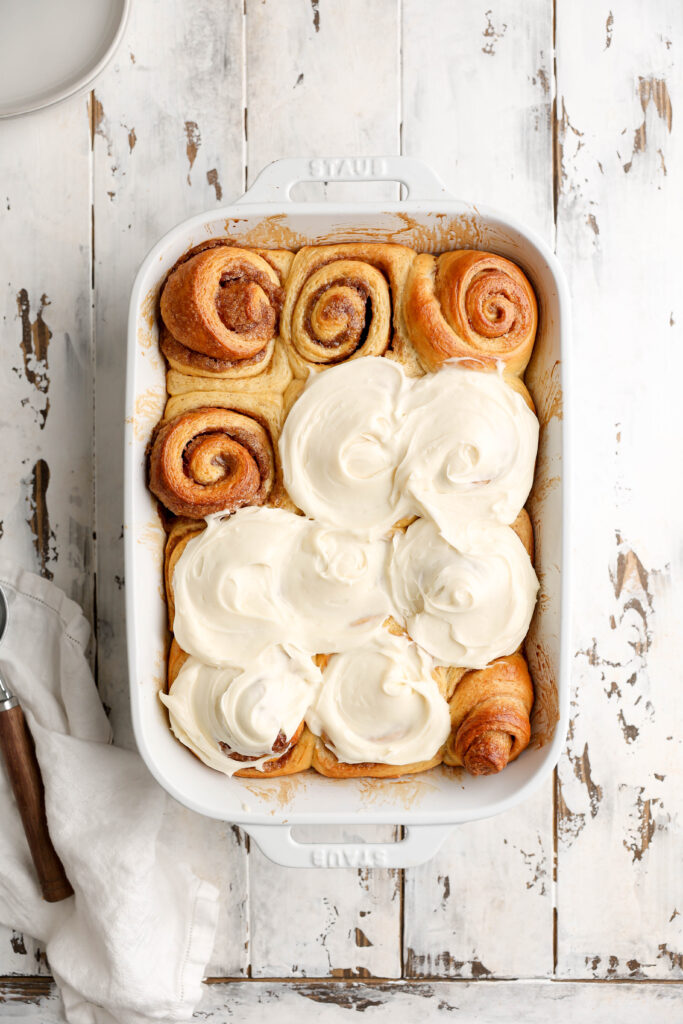
Cinnamon rolls are one of my favorite desserts of all time. Is it breakfast? Bread? Dessert? Do we care? These rolls are made with a brioche dough, which is a rich & buttery French pastry dough characterized by its high egg and butter content. This extra fat in the dough results in a tender and soft texture, making it perfect for cinnamon rolls!
There’s also an overnight option, which allows you to split up the bulk of the work if you choose. It's the perfect treat for warm & cozy mornings or a great addition to your brunch table!
Jump to:
Why you will love these brioche cinnamon rolls
- Yummy cinnamon flavor. The pillowy dough, caramelized brown sugar cinnamon filling, and the smooth cream cheese frosting make every bite of these cinnamon rolls more & more addicting and delicious.
- Versatile and adaptable. A brioche dough recipe offers endless possibilities for customization, from chocolate and nuts to fruit fillings. Perfect for breakfast, dessert, or any sweet craving, these rolls can be adapted to fit your preferences.
- Overnight convenience. With an overnight option, this brioche cinnamon roll recipe lets you do most of the work ahead, so you wake up to freshly baked, warm, gooey rolls, perfect for special occasions or lazy weekend mornings!
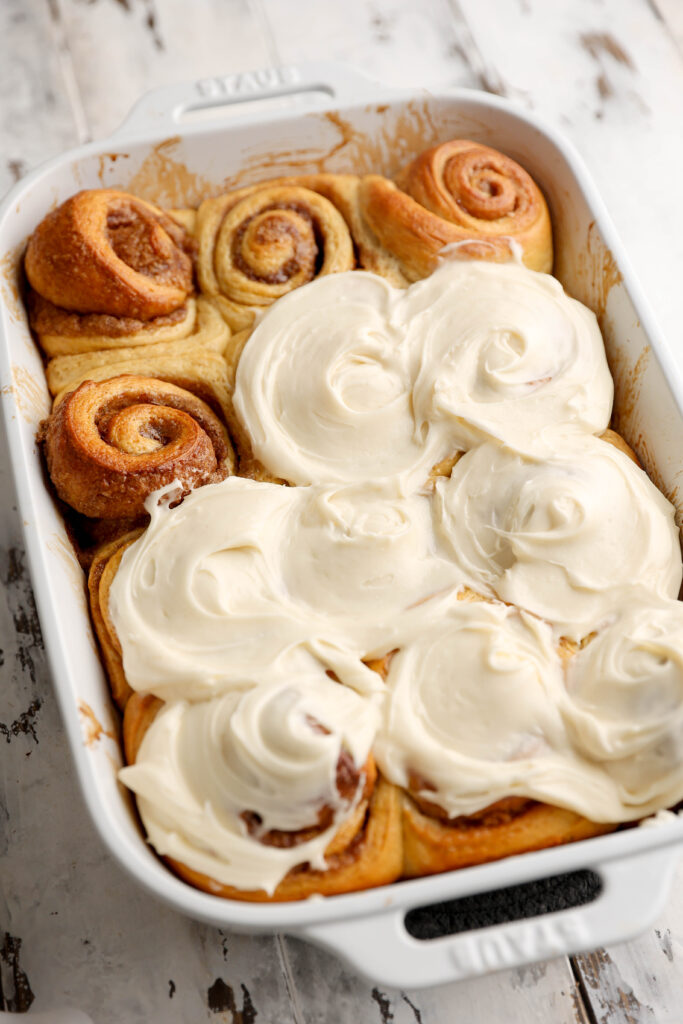
Ingredient notes
- All purpose flour: provides structure and stability to the rolls, resulting in a soft yet sturdy roll.
- Salt & nutmeg: these two spices enhance the flavor profile of the rolls, bringing out the sweetness of the dough and the warmth of the cinnamon.
- Whole milk: the moisture from the whole milk ensures a tender and rich crumb. If using active yeast, the milk needs to be heated to 110F. If you are using instant yeast, the temperature of the milk does not really matter.
- Yeast: responsible for the rise and volume of the dough. Instant yeast or active yeast works in this recipe.
- Sugar: aside from adding sweetness, the granulated sugar also acts as food for the yeast, promoting fermentation and allowing the dough to rise. We also use powdered sugar in the frosting.
- Eggs: the eggs enrich the dough with their fat content & provide structure/stability to the rolls.
- Unsalted butter: the star ingredient of brioche dough, the unsalted butter adds richness and that signature buttery taste.
- Brown sugar: the brown sugar brings sweetness and adds a caramel-like taste, creating a delightful crunch when caramelized in the oven.
- Ground cinnamon: the star of the filling - it's warmth and woody flavor elevates the overall flavor profile.
- Cream cheese: full block cream cheese should be used for the frosting - the tang from the cream cheese balances the sweetness of the powdered sugar in the frosting.
- Heavy cream: used in the egg wash to give the rolls the ultimate shine.
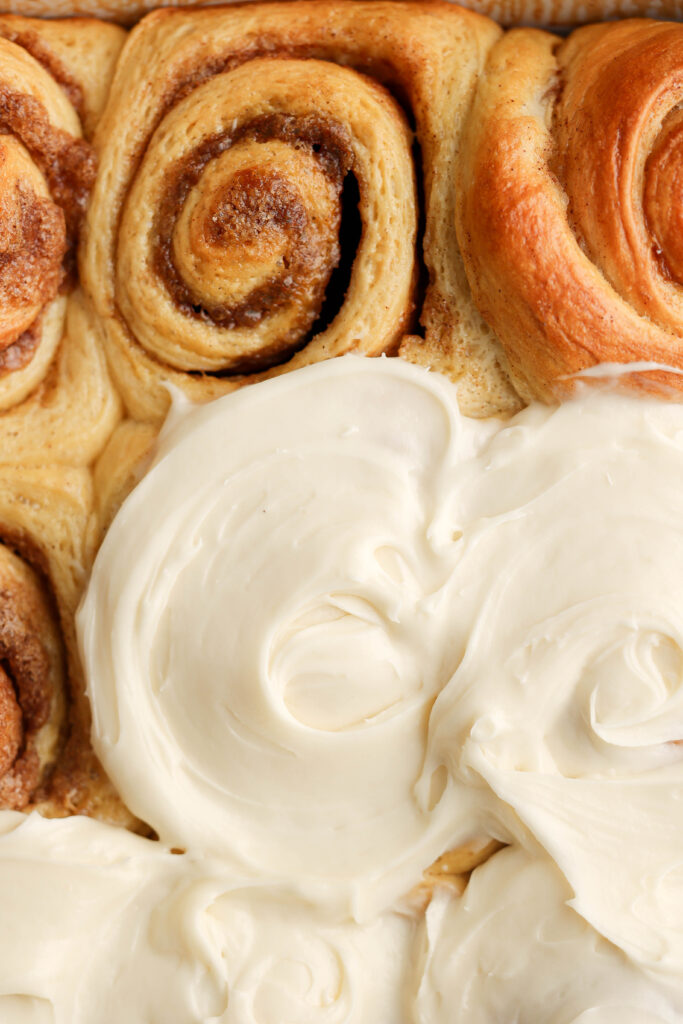
Steps
1. Make the brioche dough.
- Mix flour, salt, and nutmeg in a stand mixer. Heat milk to 110F.
- Combine yeast and sugar separately. Slowly add to heated milk while whisking. If you are using active dry yeast, allow the mixture to sit for 15 minutes. If using instant yeast, simply move on to the next step.
- Add eggs and vanilla extract to the milk/yeast mixture. Whisk well.
- Pour the milk mixture into the flour and mix until it forms a ball around the dough hook.
- Gradually add butter to the dough, knead for 8-12 minutes. Cover and let it rise for 1 hour until doubled in size or overnight in the fridge.
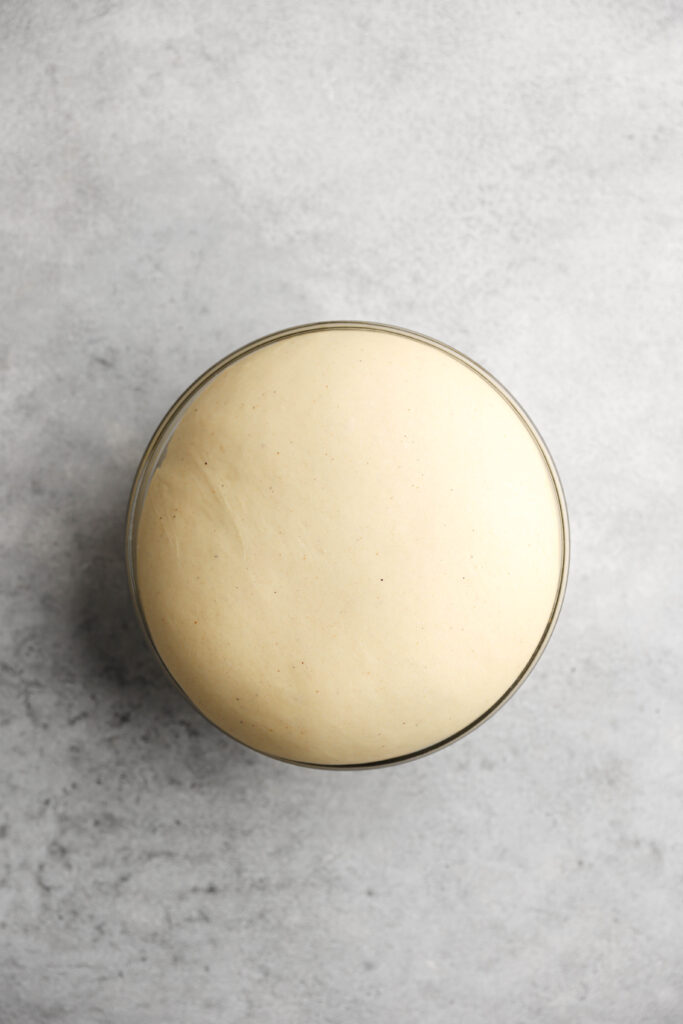
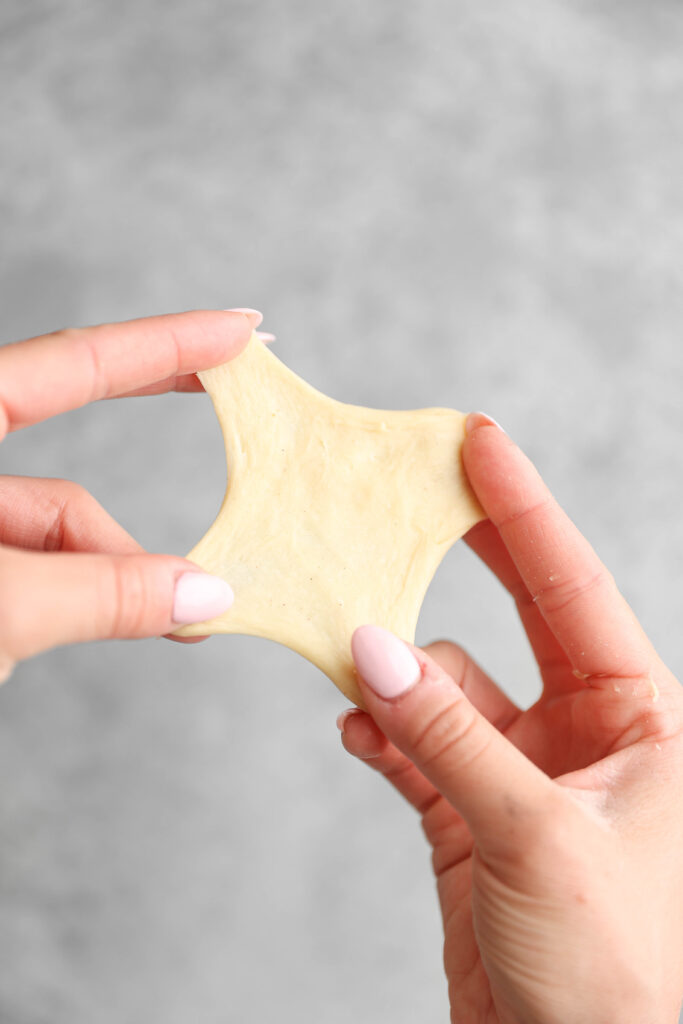
2. Make the filling.
- Ensure butter is at room temperature for easy spreading. Whisk brown sugar and cinnamon in a small bowl.
- Grease a 13x9 inch pan and set aside.
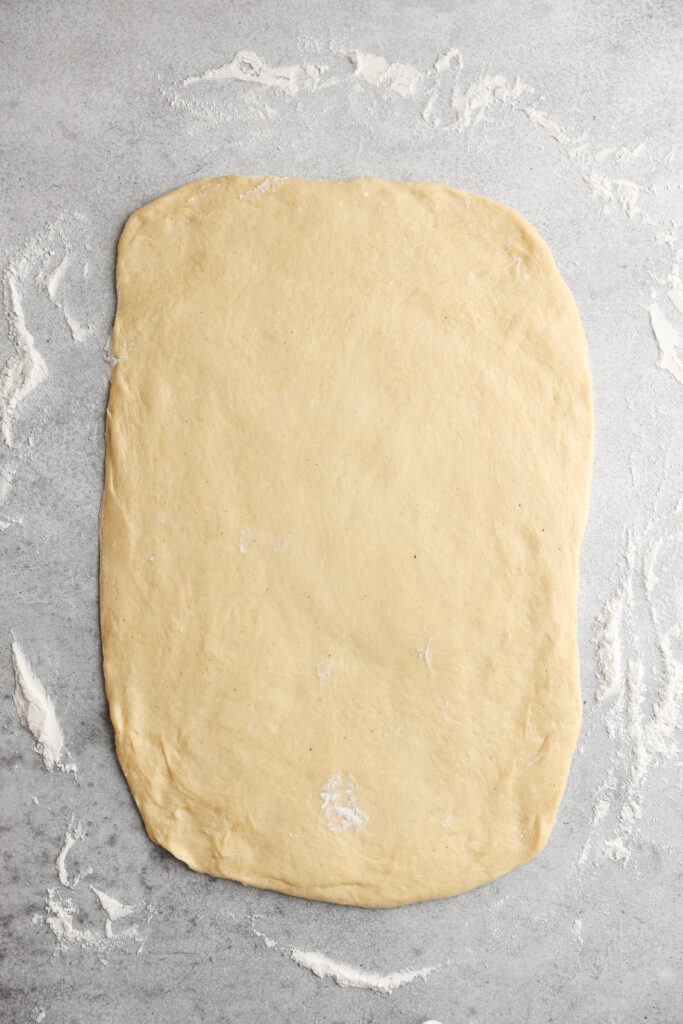
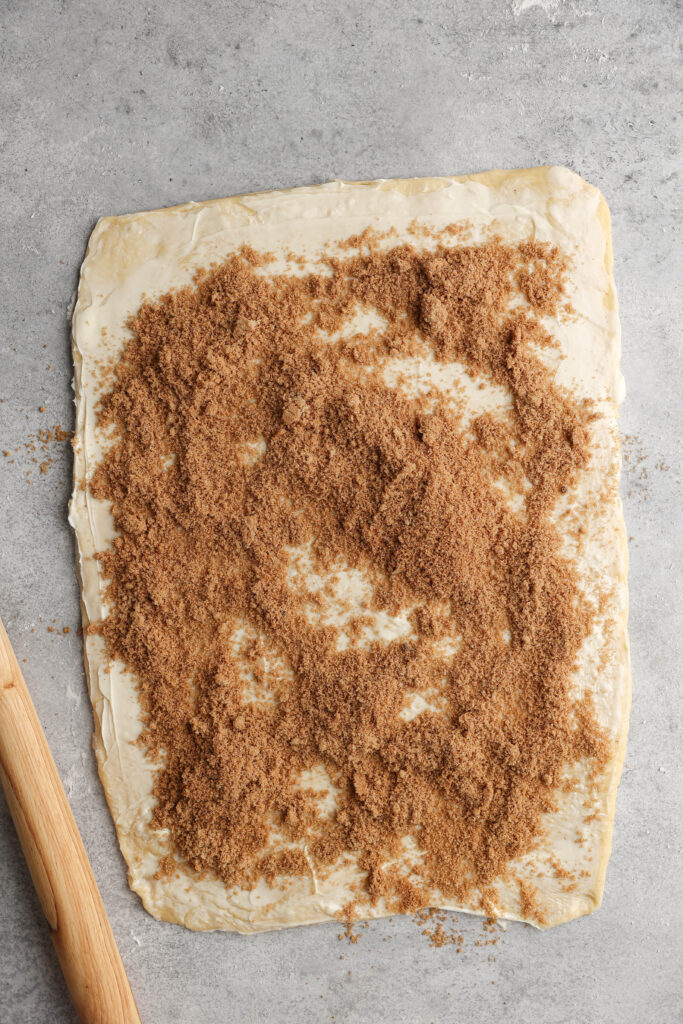
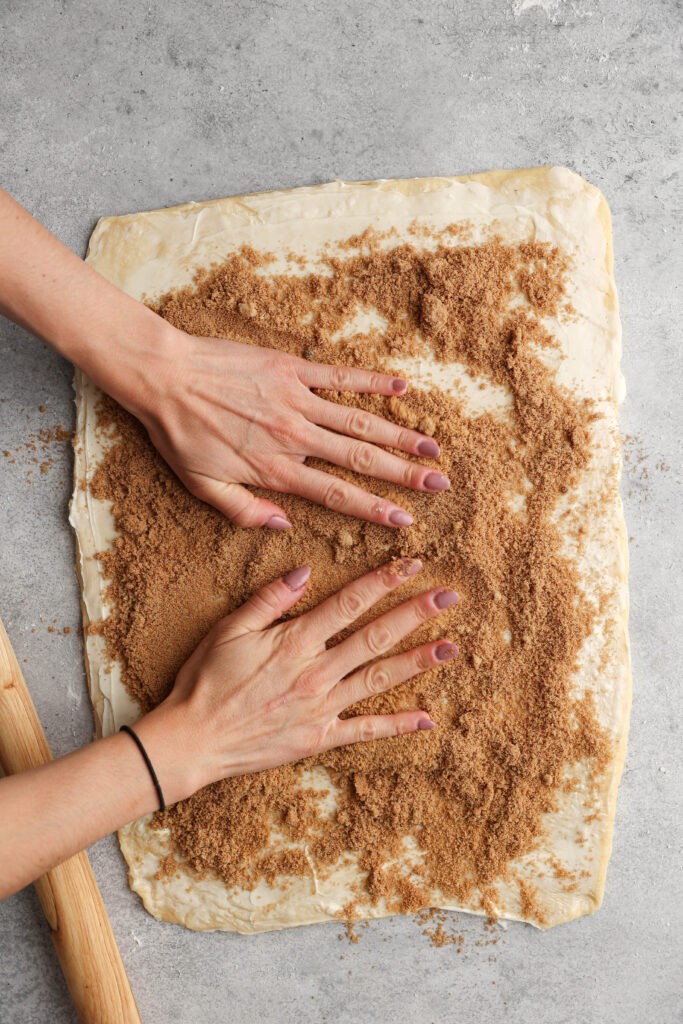
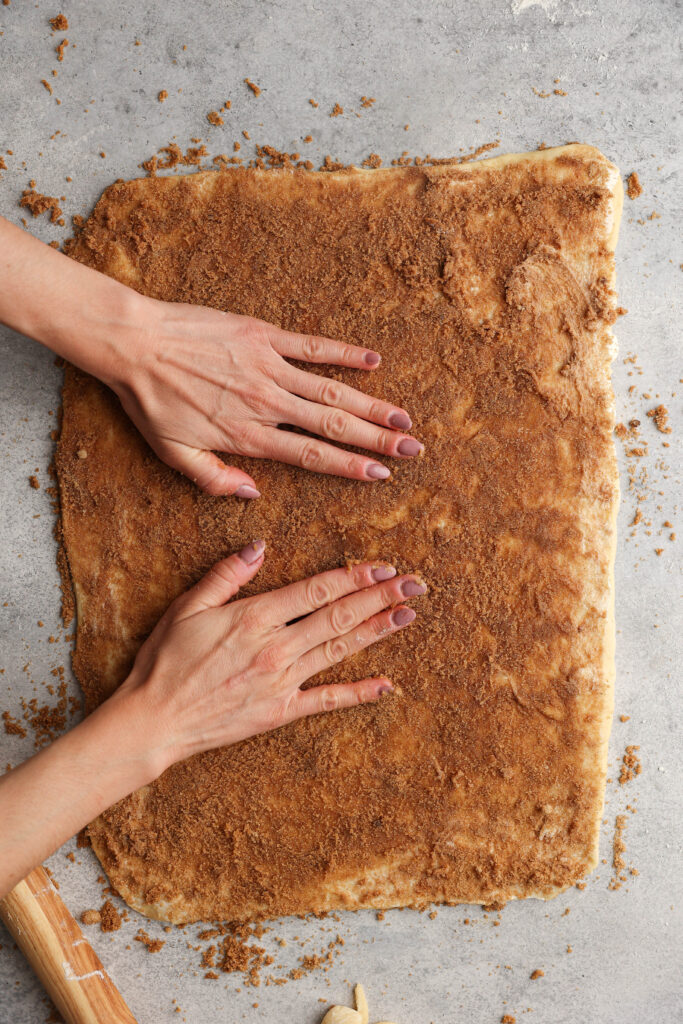
3. Prepare the rolls for baking.
- Cut the dough using one of these methods:
- Roll out dough into an 18x12 rectangle and spread softened butter evenly. Sprinkle and rub brown sugar cinnamon mixture onto the buttered dough. Using a sharp knife or pizza cutter, cut the rolled dough in half lengthwise, creating two 9x12 inch segments. Then, halve each segment again lengthwise, resulting in four segments. Next, cut those four segments into thirds, yielding 12 strips. Roll up each strip individually and arrange them in your pan.
- Roll out dough into a 20x12 rectangle and spread softened butter evenly. Sprinkle and rub brown sugar cinnamon mixture onto the buttered dough. Beginning from one of the long sides, gently roll the dough into a tight log and trim an inch off of each end, so now you have an 18 inch log. Using floss, divide the log in half, then halve each of those halves, creating four segments. Next, cut those four segments into thirds, yielding 12 rolls. Arrange them in your pan. To cut cinnamon rolls with floss, slide it under the log, cross the ends over the dough, and pull in opposite directions to create individual rolls.
- Cover the pan & let rise for an additional 45-60 minutes until ready to bake. When your dough has 15ish minutes left to proof, preheat your oven and prepare the egg wash by whisking one egg with two tablespoons of heavy cream.
- When ready, brush the rolls with egg wash, then bake for 25-30 minutes until golden brown.
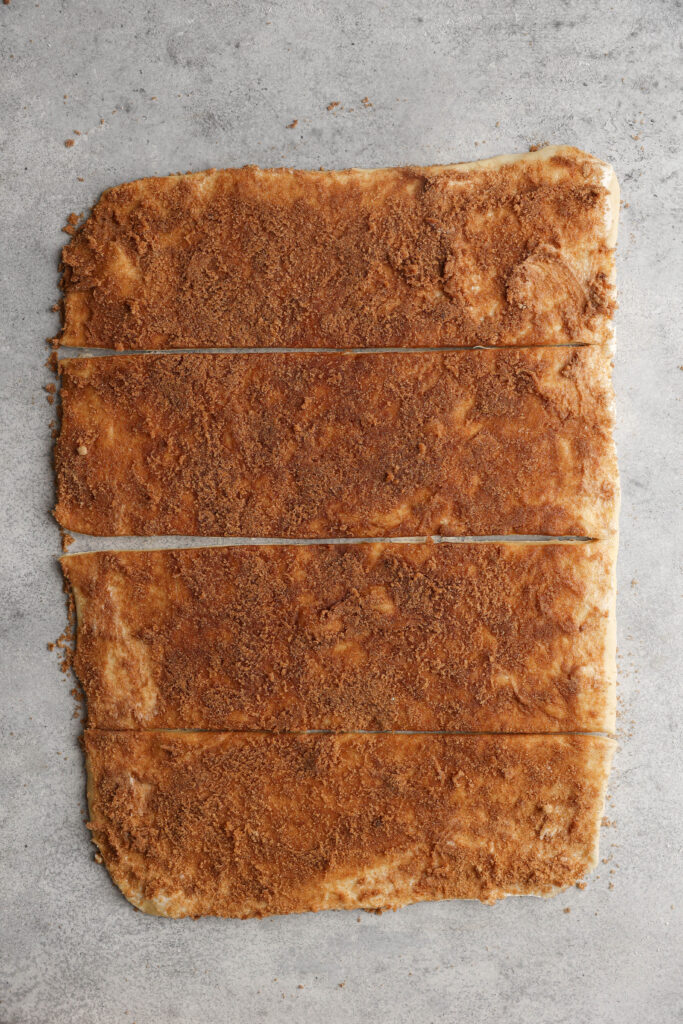
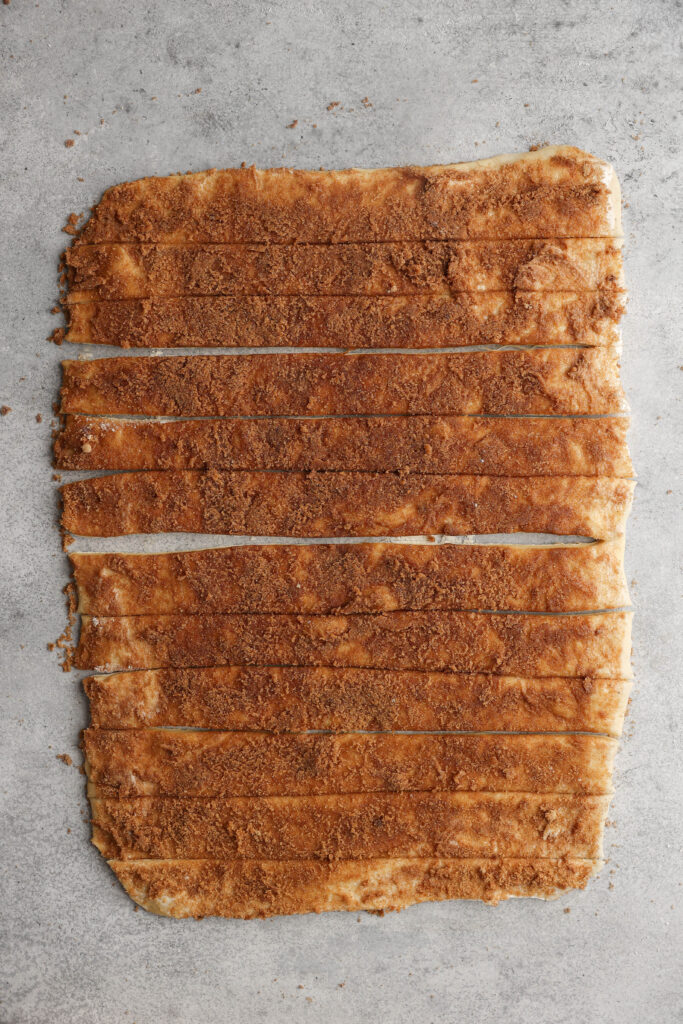
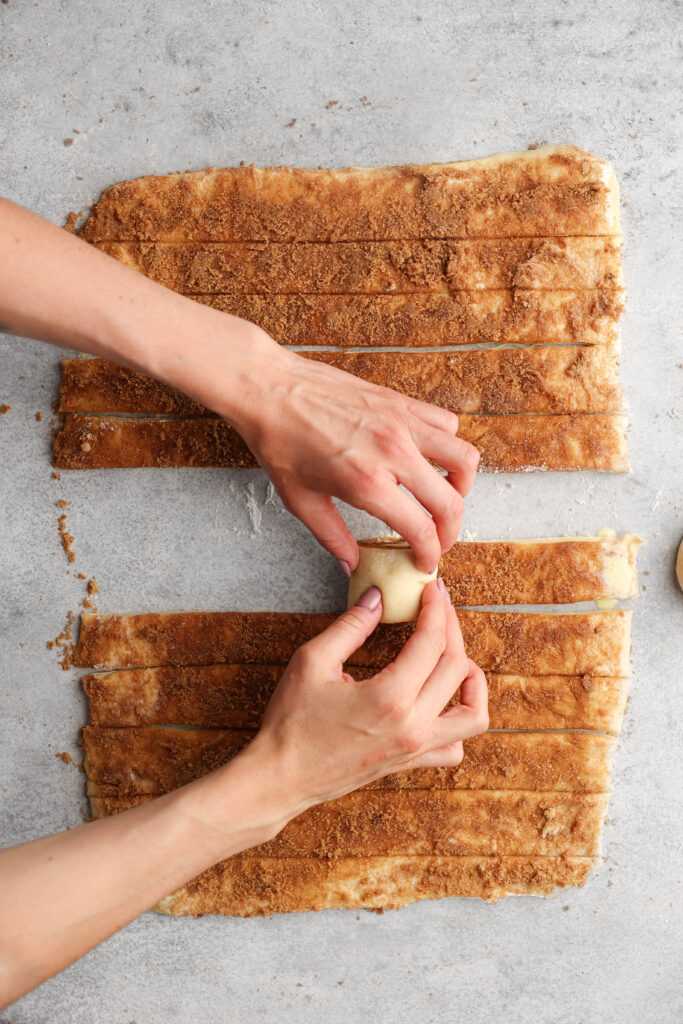
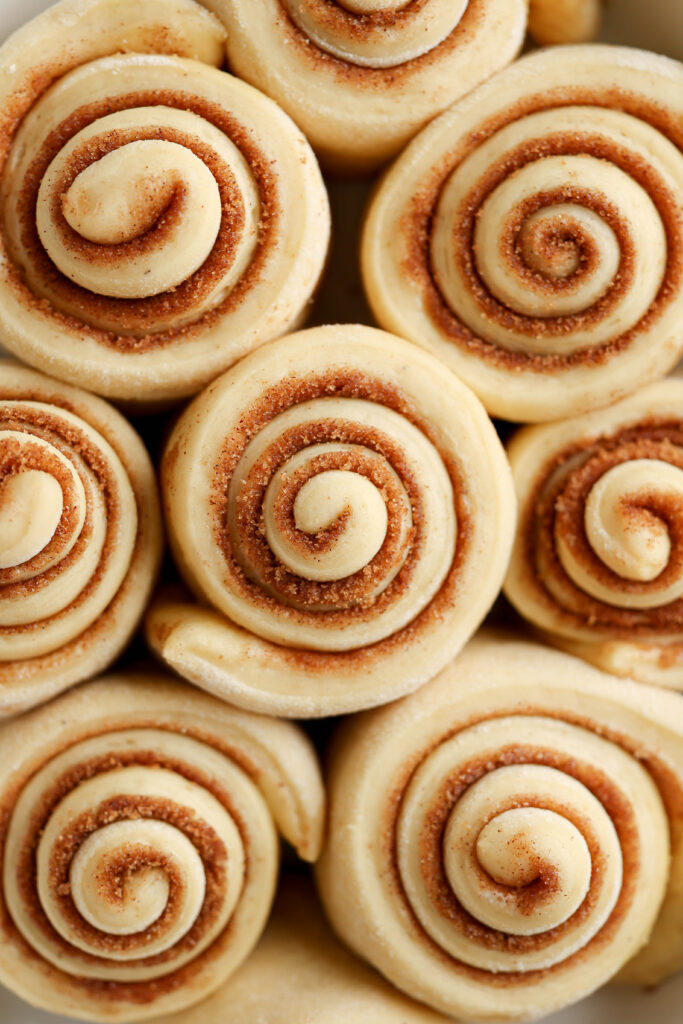
4. Prepare the cream cheese frosting.
- Beat butter and cream cheese on medium-high speed until smooth.
- Add vanilla extract and ½ cup of powdered sugar and mix. Gradually add more powdered sugar, scraping down the bowl as needed, until fully incorporated.
- Generously spread warm cream cheese frosting over the cinnamon rolls for a gooey, irresistible finishing touch.
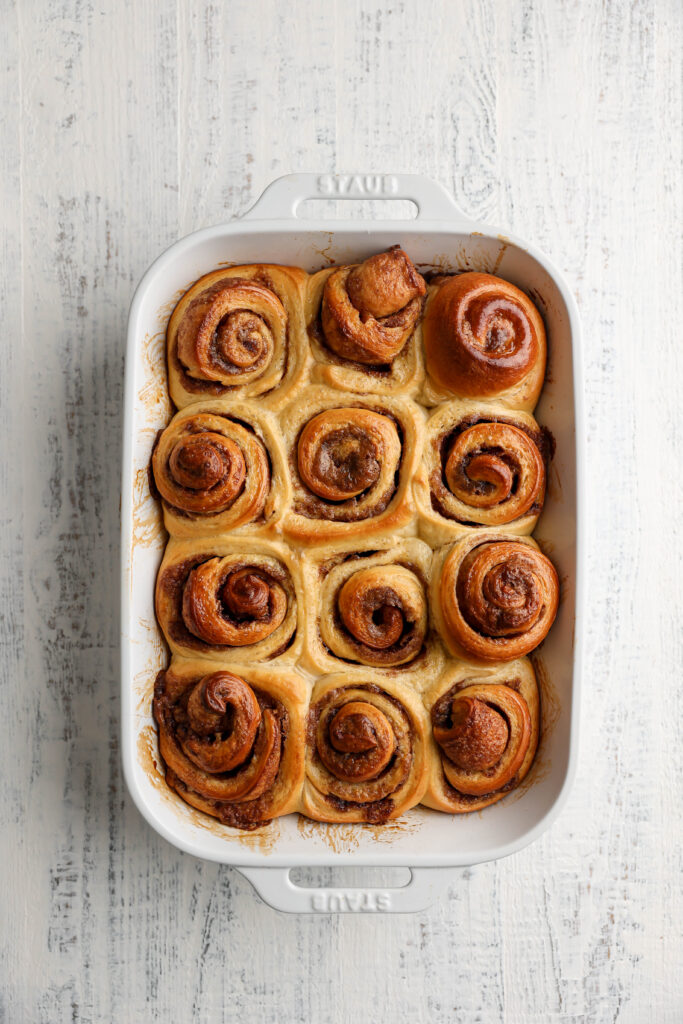
Brioche bread baking tips
- Use a kitchen scale. I cannot stress this enough - a kitchen scale is the only way to ensure accurate results. They are cheap and will make cleaning up SO much easier.
- Allow the dough to rise for the entire instructed time. Don't rush the rise process! Interrupting the rise can result in a dense bread.
- Carefully proof the dough. Over-proofing results in popped air bubbles and no spring-back when poked. Under-proofing causes immediate spring-back. Optimal proofing is indicated by a slow spring-back.
- If you let the dough rise in the fridge, make sure to bake within 24 hours. It is perfectly okay to let your dough rise in the fridge overnight. However, try not to let it reach that 24 hour mark, otherwise you run the risk of having an over-proofed dough.
- Use an egg wash. The only way to achieve a shiny, golden brown crust is to use an egg wash. Simply mix one egg with two tablespoons of heavy cream, then use your finger or a pastry brush to gently brush the mixture onto the dough.
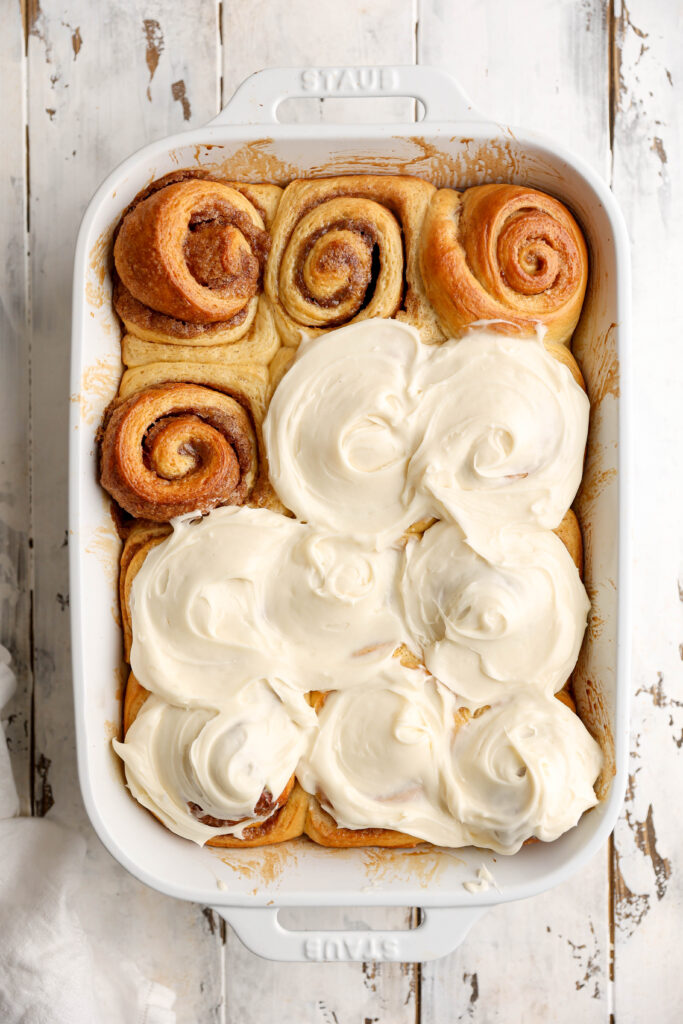
Baking in grams
I rely on gram measurements when testing recipes because they offer the highest level of accuracy (and less cleanup!). Unlike volume measurements, which can vary, grams provide a reliable and consistent standard. I carefully test all of my recipes using this kitchen scale, therefore I cannot guarantee the outcome when using volume measurements. However, volume measurements are available in the recipe card.
Other yeast bread recipes you may like
Have you tried this recipe? I would love to know how it turned out! Leave a star rating & review below and tag @sturbridgebakery on Instagram so I can see photos & videos of your yummy bakes! Want to save this recipe for later? Tap the heart button on the right side of your screen!
This post may contain affiliate links.

Brioche Cinnamon Rolls
Equipment
Ingredients
Cinnamon Roll Dough
- 3 ¾ cups (470 grams) all purpose flour
- 1 ½ teaspoons salt
- ½ teaspoon nutmeg
- ¾ cup (180 grams) whole milk room temperature
- 1 standard instant/active yeast packet + ~½ tablespoon (11 grams) of another packet
- ¼ cup plus 2 tablespoons (75 grams) granulated sugar
- 2 eggs room temperature
- 2 teaspoons vanilla extract
- ½ cup (113 grams) unsalted butter room temperature, cut in cubes
Filling
- 6 tablespoons (85 grams) unsalted butter room temperature
- 1 cup (200 grams) brown sugar
- 1 tablespoon + 1 teaspoon ground cinnamon
Egg Wash
- 1 egg
- 2 tablespoons heavy cream
Cream Cheese Frosting
- ¼ cup (57 grams) unsalted butter room temperature
- 4 oz cream cheese room temperature
- 1 teaspoon vanilla extract
- 1 ½ cups (180 grams) powdered sugar
Instructions
Cinnamon Roll Dough
- In the bowl of a stand mixer fitted with the hook attachment, mix the flour, salt, and nutmeg. Set aside.3 ¾ cups all purpose flour, 1 ½ teaspoons salt, ½ teaspoon nutmeg
- Heat the milk to 110F (if you don’t have a thermometer, I usually microwave it for 30 seconds on high, which gets me to about 110-120F).¾ cup whole milk
- While the milk is heating up, whisk the yeast and the sugar in a small bowl. Set aside.1 standard instant/active yeast packet + ~½ tablespoon of another packet, ¼ cup plus 2 tablespoons granulated sugar
- While whisking constantly, slowly stream in the sugar/yeast mixture into the heated milk. If you are using active dry yeast, allow the mixture to sit for 15 minutes. The yeast will activate in this time. If using instant yeast, you don’t have to wait for the yeast to activate, simply move on to the next step.
- Mix the eggs and vanilla extract into the milk/yeast mixture. Whisk well to combine.2 eggs, 2 teaspoons vanilla extract
- Pour the milk/yeast/egg mixture into the flour and mix on low-medium speed for about 3 minutes, or until it forms a ball around the hook.
- With the mixer on medium speed, add the butter a few pieces at a time, allowing them to fully incorporate before adding more. Once all of the butter is fully incorporated, turn the mixer up to medium-high speed and knead for an additional 8-12 minutes (mine usually takes about 10 minutes).½ cup unsalted butter
- To check if the dough has kneaded enough, rip off a small piece of dough and spread it gently in between your fingers. If it stretches easily without ripping and you can see light passing through it, it is finished and ready to proof.
- Transfer the dough to a lightly greased bowl, cover with a towel, and let it rise in a warm environment for about 1 hour, or until doubled in size. Alternatively, cover the bowl with plastic wrap and let it rise in the fridge overnight.
Filling
- If baking the rolls that day, take the butter out of the fridge so it comes to room temperature while the dough rises. If you are baking the next day, simply do this an hour before you plan on rolling out the dough. It is important that the butter is super soft and spreadable, otherwise you will have trouble spreading it and could potentially tear the dough or make holes. But also don’t make it so soft that it’s basically melted.6 tablespoons unsalted butter
- In a small bowl, whisk together the brown sugar and cinnamon. Set aside.1 cup brown sugar, 1 tablespoon + 1 teaspoon ground cinnamon
Preparing the rolls and baking
- Lightly grease a 13x9 inch pan, casserole pan, etc., and set aside.
- There are a few ways you can roll the dough.
- 1) Cut the dough into strips, then roll: On a lightly floured surface, roll the dough out into an 18x12 inch rectangle. Spread the butter into an even and smooth layer across the rolled out dough. Sprinkle on the brown sugar cinnamon mixture so it is covering the butter. Using your hands, rub the mixture completely into the butter. Using a pizza cutter or sharp knife, cut the rolled dough in half lengthwise, creating two 9x12 inch segments. Then, halve each segment again lengthwise, resulting in four segments. Next, cut those four segments into thirds, yielding 12 strips. Roll up each strip individually and arrange them in your pan.
- 2) Roll the dough into a log, then cut with floss: On a lightly floured surface, roll the dough out into a 20x12 inch rectangle. Spread the butter into an even and smooth layer across the rolled out dough. Sprinkle on the brown sugar cinnamon mixture so it is covering the butter. Using your hands, rub the mixture completely into the butter. Gently roll the dough into a tight log, starting from the long side. Pinch the dough to close the log. To cut: place a piece of floss under the log with the ends coming up on the sides, then cross the floss over the dough and pull to cut it. Trim an inch off of each end, so now you have an 18 inch log. Divide the log in half, and then cut those two halves in half to create four segments. Finally, cut each of the four segments into thirds, resulting in 12 rolls. Arrange the rolls in your pan.
- Cover and let rise in a warm environment for 45-60 minutes. When the dough has 15ish minutes left to rise, preheat your oven to 350F. Then, in a small bowl, gently whisk together one egg and two tablespoons of heavy cream for an egg wash.1 egg, 2 tablespoons heavy cream
- Press your finger into a roll - if it bounces back immediately, it needs more rest. If it doesn’t bounce back at all, it is over-proofed and should be baked immediately. If it bounces back slowly, it’s ready to be baked.
- Once ready, brush the rolls with the egg wash, then bake for 25-28 minutes. The tops should be lightly golden brown.
Cream Cheese Frosting
- In the bowl of a stand mixer fitted with the paddle attachment, or a large bowl if using a handheld mixer, beat the butter and cream cheese on medium-high speed until smooth and well combined.¼ cup unsalted butter, 4 oz cream cheese
- Add the vanilla extract and ½ cup of the powdered sugar, starting on low speed to avoid any sugar flying out of the bowl, then increasing to high speed. Continue to add ½ cup of powdered sugar at a time until fully incorporated. Scrape down the bottom and sides of the bowl as needed.1 teaspoon vanilla extract, 1 ½ cups powdered sugar
- Generously spread the cream cheese frosting over the warm cinnamon rolls and enjoy!
Tried this recipe? Make sure to rate and review and tag @sturbridgebakery on Instagram!


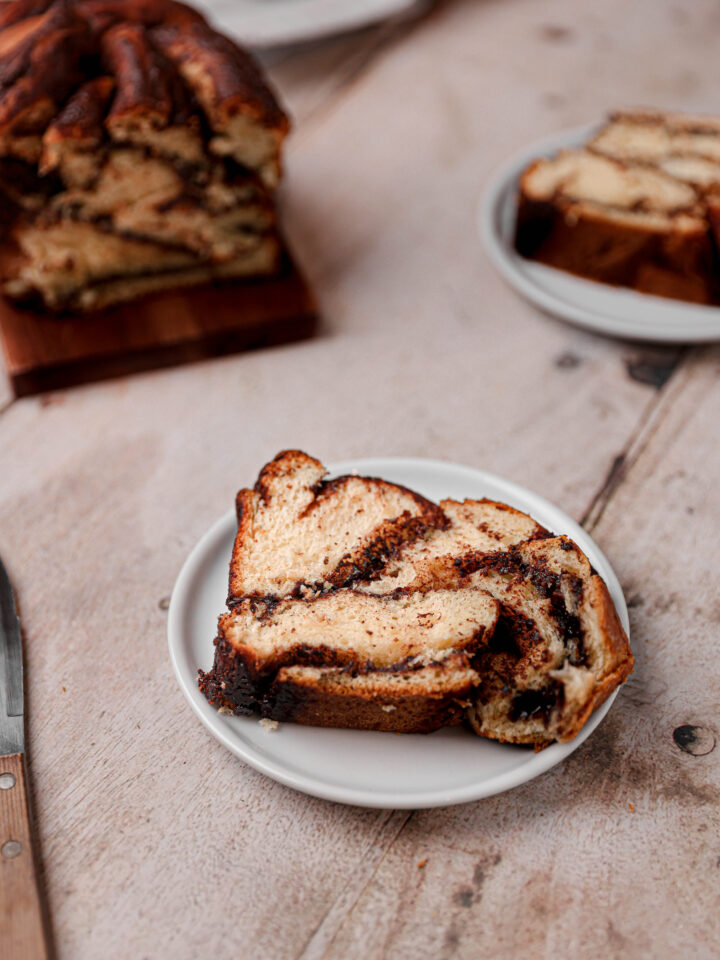
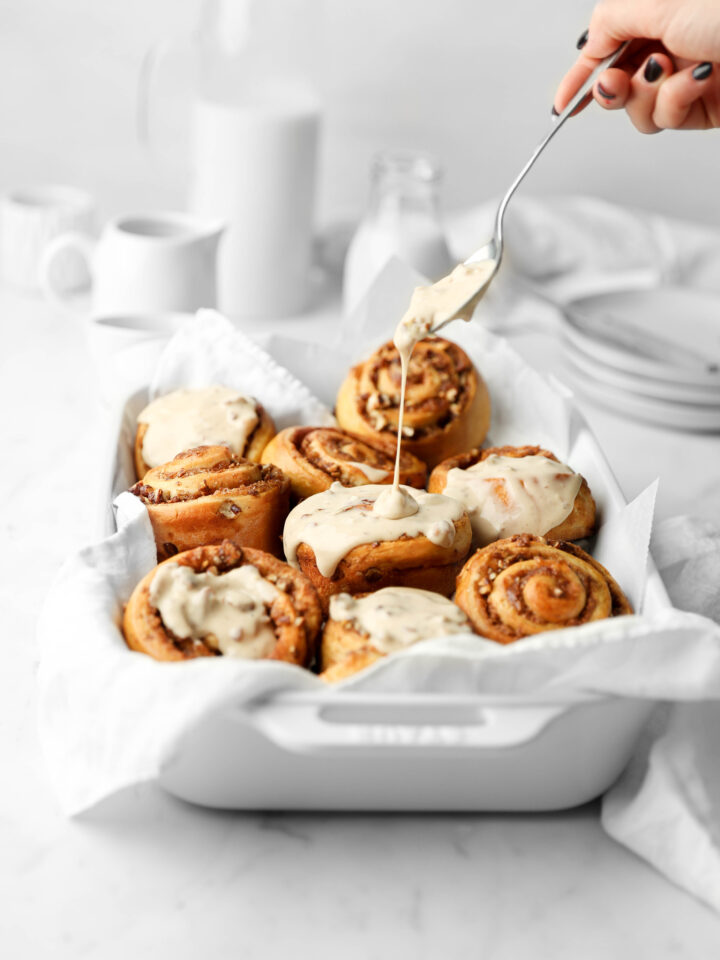
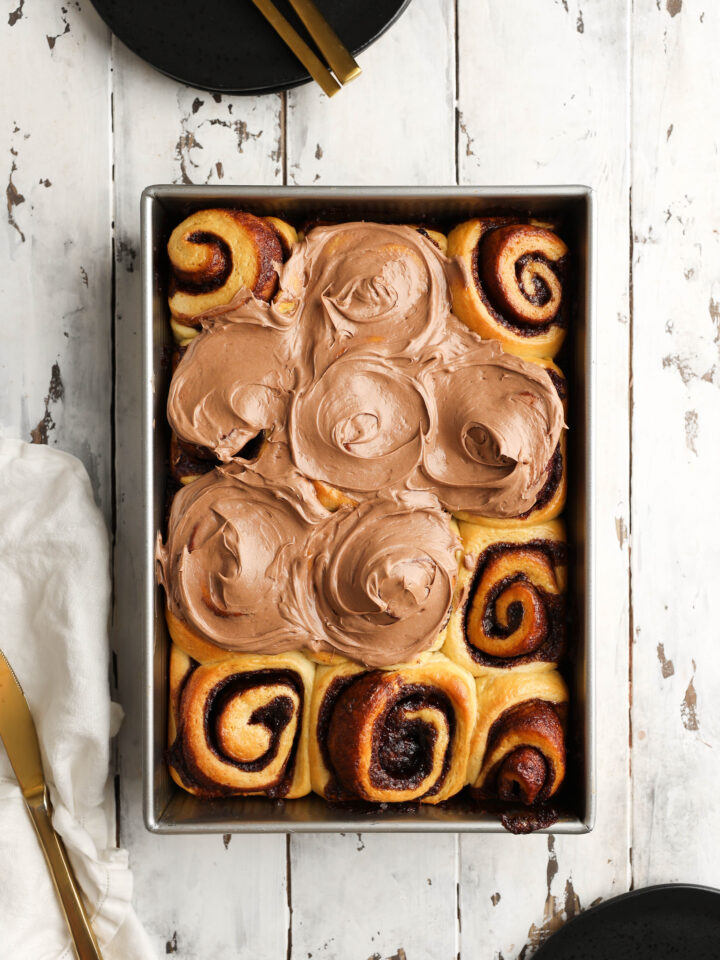

Laura
These came out perfect. Literally the only thing I changed was using a chefs knife to cut the log vs floss.
Jess Italiano
Yay!! Thanks for trying!